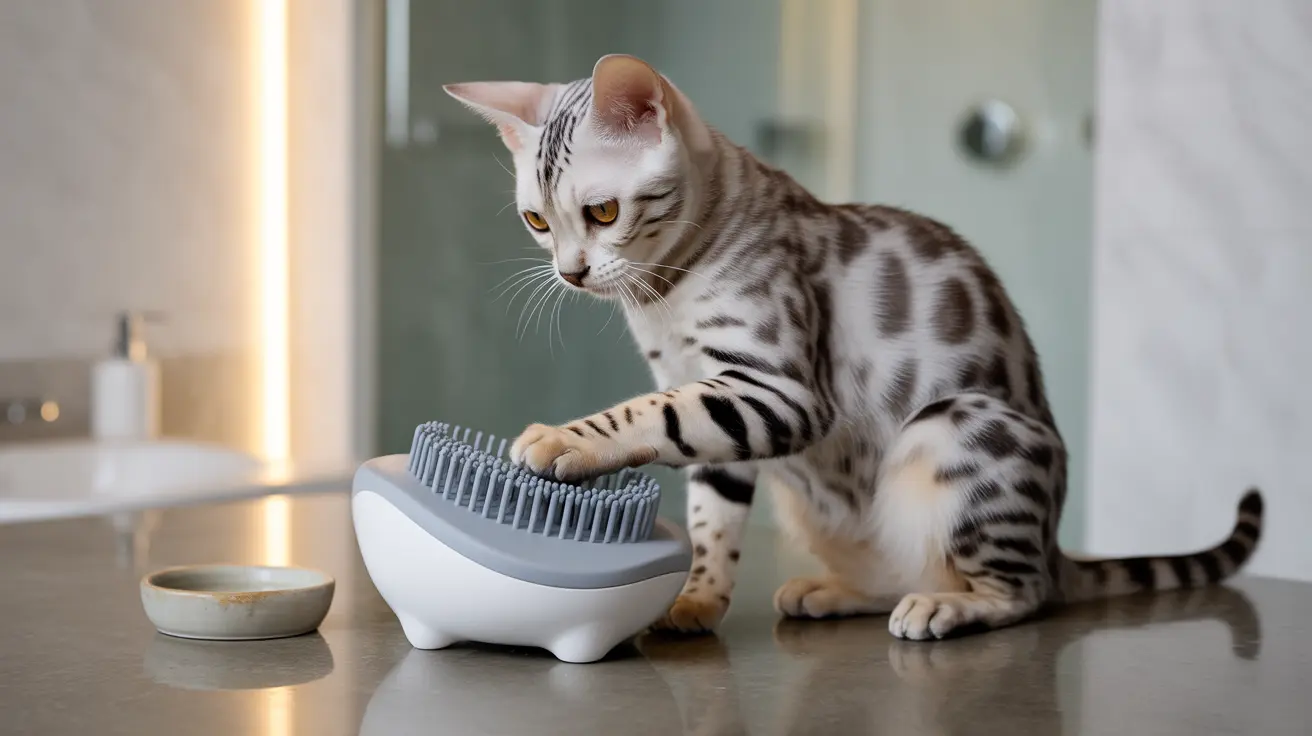Understanding the Importance of Clean Cat Paws
Cat paws are remarkable structures that serve multiple purposes - from walking and climbing to temperature regulation and scent marking. When paws become dirty or contaminated, cats may ingest harmful substances during their natural grooming process, making regular cleaning essential for their overall health.
Moreover, dirty paws can track litter, debris, and bacteria throughout your home, affecting both household hygiene and your cat's wellbeing. Regular cleaning helps prevent these issues while allowing you to spot potential health problems early.
Types of Cat Paw Cleaners
Manual Cleaning Tools
Simple tools like pet wipes, soft cloths, and gentle brushes offer effective cleaning solutions for most cats. These basic implements are especially useful for cats who don't tolerate more elaborate cleaning methods.
Automated Paw Cleaning Devices
Modern cat paw cleaners include portable cups with soft silicone bristles that help remove dirt and debris. These devices are particularly helpful for cats returning from outdoor adventures or those who frequently get muddy paws.
Establishing a Paw Cleaning Routine
The key to successful paw cleaning lies in establishing a consistent routine that both you and your cat can adjust to. Start with short sessions and gradually increase duration as your cat becomes more comfortable with the process.
Daily Maintenance Tips
- Inspect paws daily for debris or injuries
- Wipe paws with pet-safe wipes after litter box use
- Remove any stuck litter or outdoor debris promptly
- Check between toe pads for foreign objects
Special Considerations for Different Cats
Indoor Cats
Indoor cats primarily need attention to litter debris and household dust. A quick daily wipe-down is usually sufficient for maintaining clean paws.
Outdoor Cats
Cats who venture outside require more thorough cleaning to remove mud, chemicals, and environmental contaminants. Consider using a dedicated cat paw cleaner after outdoor sessions.
Professional Care and When to Seek Help
While regular cleaning can prevent many issues, some situations require professional attention. Monitor your cat's paws for signs of injury or infection, and don't hesitate to consult a veterinarian when needed.
Frequently Asked Questions
How do I safely clean my cat's paws without using water?
Use pet-safe wipes or a slightly damp microfiber cloth to gently clean each paw. Focus on the paw pads and between the toes, being careful not to oversaturate the fur.
What are the best cat paw cleaners and wipes that are safe for sensitive skin?
Look for unscented, alcohol-free wipes specifically designed for pets. Popular options include fragrance-free baby wipes or specialized pet wipes with natural ingredients like aloe vera and chamomile.
How often should I clean and inspect my cat's paws to prevent infections?
Inspect your cat's paws daily and clean them at least 2-3 times per week for indoor cats, or after every outdoor excursion for outdoor cats. Increase frequency if your cat has specific health concerns or environmental exposures.
What signs of paw injury or infection should prompt a visit to the vet?
Seek veterinary care if you notice limping, swelling, redness, discharge, excessive licking, or any cuts or punctures. These could indicate infection or injury requiring professional treatment.
Can moisturizing creams or natural balms help with dry or cracked cat paw pads?
Yes, pet-safe moisturizing products can help maintain healthy paw pads. Use veterinarian-approved products specifically formulated for cats, and apply them when your cat is calm to ensure proper absorption.
Conclusion
Regular paw cleaning is a crucial aspect of cat care that promotes both health and hygiene. By choosing the right cat paw cleaner and establishing a consistent routine, you can help ensure your feline friend maintains healthy, clean paws throughout their life. Remember to always approach paw cleaning with patience and gentle handling to make it a positive experience for your cat.






